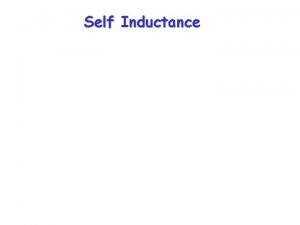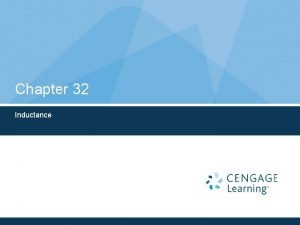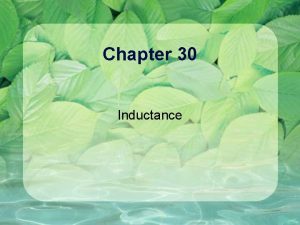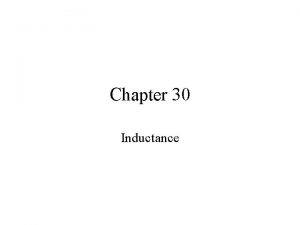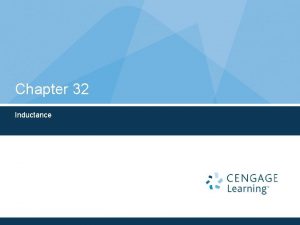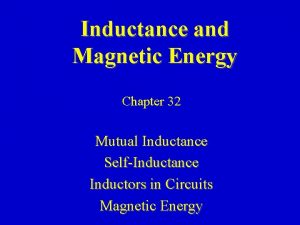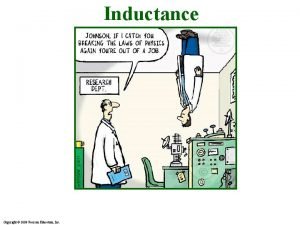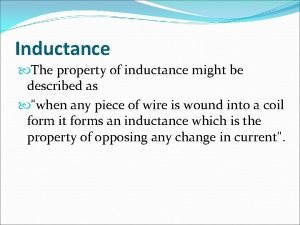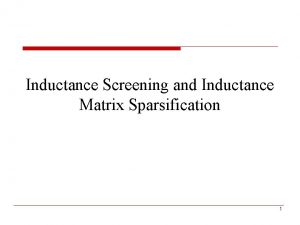Chapter 30 Inductance Power Point Lectures for University













- Slides: 13

Chapter 30 Inductance Power. Point® Lectures for University Physics, Twelfth Edition – Hugh D. Young and Roger A. Freedman Lectures by James Pazun Copyright © 2008 Pearson Education Inc. , publishing as Pearson Addison-Wesley

Goals for Chapter 30 • To introduce and illustrate mutual inductance • To consider self-inductance • To calculate magnetic-field energy • To describe and study R-L circuits • To describe and study L-C circuits • To describe and study L-R-C circuits Copyright © 2008 Pearson Education Inc. , publishing as Pearson Addison-Wesley

Introduction • A charged coil can create a field that will induce a current in a neighboring coil. • Inductance can allow a sensor to trigger the traffic light to change when the car arrives at an intersection. This device is my favorite … I know when I’m sitting through an old light, it cycles for 2 minutes before I can go. Copyright © 2008 Pearson Education Inc. , publishing as Pearson Addison-Wesley

Mutual inductance • A coil in one device generates a field that creates a current in a neighboring coil. You could use this principle to create a charger that restores a battery without an actual connection, just proximity. Copyright © 2008 Pearson Education Inc. , publishing as Pearson Addison-Wesley

Mutual inductance—examples • Refer to Example 30. 1. • See Figure 30. 3 below. • Follow Example 30. 2. Copyright © 2008 Pearson Education Inc. , publishing as Pearson Addison-Wesley

Self-inductance Copyright © 2008 Pearson Education Inc. , publishing as Pearson Addison-Wesley

Applications and calculations • Consider Figures 30. 6 at right. • Follow Example 30. 3 illustrated by Figure 30. 8 below. • Follow Example 30. 4. Copyright © 2008 Pearson Education Inc. , publishing as Pearson Addison-Wesley

Magnetic field energy • Consider Figure 30. 10, below center. • Refer to Example 30. 5. • Refer to Example 30. 6. Copyright © 2008 Pearson Education Inc. , publishing as Pearson Addison-Wesley

The R-L circuit • Read Problem-Solving Strategy 30. 1. • Consider Figure 30. 11, in the lower-left quadrant of the page. • Consider Figure 30. 12. Copyright © 2008 Pearson Education Inc. , publishing as Pearson Addison-Wesley

R-L circuit II • Follow Example 30. 7. • Consider Figure 30. 13 at right. • Follow Example 30. 8. Copyright © 2008 Pearson Education Inc. , publishing as Pearson Addison-Wesley

The L-C circuit • Consider Figure 30. 14. Copyright © 2008 Pearson Education Inc. , publishing as Pearson Addison-Wesley

Applications and comparisons • Consider Figure 30. 15. • Use Table 30. 1. • Follow Example 30. 9. • Follow Example 30. 10. Copyright © 2008 Pearson Education Inc. , publishing as Pearson Addison-Wesley

The L-R-C circuit • An application of the damped oscillator. • Consider Figure 30. 16. • Consider Figure 30. 17. • Follow Example 30. 11. Copyright © 2008 Pearson Education Inc. , publishing as Pearson Addison-Wesley

















